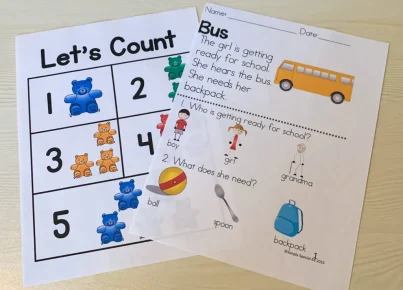Introduction
Every student should have the opportunity to reach their full academic potential. For those with special educational needs (SEN), creating an inclusive and effective learning environment can be challenging, but it is essential to ensure equitable education. This article focuses on study skills that can enhance learning and comprehension for students with SEN, making the journey towards academic success easier and more enjoyable.
1. Create a Structured Study Environment
A structured study environment is essential for students with SEN. This means establishing a dedicated space for studying and maintaining a consistent daily schedule. This structured approach helps create a sense of routine, which can be especially beneficial for children with Attention Deficit Hyperactivity Disorder (ADHD) or Autism Spectrum Disorder (ASD).
2. Break Tasks into Smaller Steps
Breaking tasks into smaller, manageable steps makes it easier for students with SEN to understand and complete assignments. This strategy works well for developing problem-solving skills and mastering complex subjects such as math or reading by focusing on one step at a time.
3. Use Multisensory Learning Strategies
Multisensory learning strategies involve engaging multiple senses at once to help students better process and retain information. For example, use visual aids like charts or diagrams, auditory tools like recordings or read-alouds, and tactile activities to promote hands-on learning. These strategies can be highly beneficial for children with dyslexia or other learning difficulties.
4. Implement Self-Monitoring Techniques
Self-monitoring techniques allow students to track their own progress, helping them take ownership of their learning experience. Teaching students to reflect on their successes and struggles during the study process will encourage self-awareness and foster independent problem-solving skills.
5. Leverage Assistive Technology
There are numerous assistive technologies available that can significantly improve the study experience for students with SEN. Text-to-speech tools, alternative keyboard layouts, and voice recognition software can provide valuable support for children with difficulties in reading, writing, or motor skills.
6. Encourage Regular Breaks
Regular breaks are important to help students with SEN maintain focus and avoid becoming overwhelmed. Encouraging short breaks for relaxation or physical activity can alleviate stress, recharge mental capacity, and promote overall well-being.
7. Provide Clear Instructions and Feedback
Students with SEN often need clear instructions and immediate feedback to help them understand expectations and stay on track. Offering step-by-step guidance and constructive criticism can provide a sense of direction and boost students’ confidence in their abilities.
Conclusion
Every child deserves an opportunity to succeed academically. By utilizing these strategies, educators and parents can create an inclusive and effective learning environment that promotes the development of essential study skills for students with special educational needs. With persistence, patience, and empathy, we can help these wonderful children reach their full potential.





